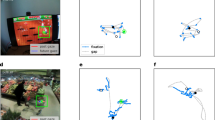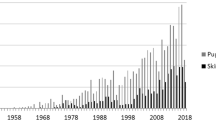Abstract
We study new fast computational procedures for a pilot blackout (total loss of vision) detection in real time. Their validity is demonstrated by data acquired during experiments with volunteer pilots on a human centrifuge. A new systematic class of very fast suboptimal group filters is employed. The utilization of various inherent group invariancies of signals involved allows us to solve the detection problem via estimation with respect to many performance criteria. The complexity of the procedures in terms of the number of computer operations required for their implementation is investigated. Various classes of such prediction procedures are investigated, analyzed and trade offs are established. Also we investigated the validity of suboptimal filtering using different group filters for different performance criteria, namely: the number of false detections, the number of missed detections, the accuracy of detection and the closeness of all procedures to a certain bench mark technique in terms of dispersion squared (mean square error). The results are compared to recent studies of detection of evoked potentials using estimation. The group filters compare favorably with conventional techniques in many cases with respect to the above mentioned criteria. Their main advantage is the fast computational processing.
Similar content being viewed by others
References
Bachen, N.I. Detection of stimulus-related (evoked response) activity in the Electroencephalogram (EEG). IEEE Trans. Biomed. Eng. 33(6):566–571; June 6, 1986.
Cairns, T.W. On the Fourier transform on finite abelian groups. IEEE Trans. Computers. Vol. C-20, No. 5; May, 1971.
Carlton, E.H.; Katz, S. Is Wiener filtering an effective method of improving evoked potential estimation? IEEE Trans. Biomed. Eng. 27(4):187–192; April, 1980.
Chaudhary, A.H. Pilot blackout detection as a multiobjective optimization problem. Philadelphia, PA: Drexel University, August, 1988. M.Sc. Thesis.
Doyle, D.J. A proposed methodology for evaluation of the Wiener filtering method of evoked potential estimation. Electro. Clin. Neuro. 43:749–751; 1977.
Doyle, D.J. Some comments on the use of Wiener filtering for estimation of evoked potential. Electro. Clin. Neuro. 28:533–534; 1977.
Elliot, D.F.; Rao, K.R.; Fast transforms: Algorithms, analyses and applications. New York: Academic Press; 1983.
Garey, M.R.; Johnson, D.C. Computers and intractability. San Francisco: Freeman and Co.; 1979.
Jacobs, K.J. Acceleration induced blackout detection by matched filtering of coded visually evoked responses. Philadelphia, PA: Drexel University; June, 1986. M.S. Thesis.
Kailath, T. Correlation detection of signals purturbed by a random channel. IRE Trans. Info. Theory. May, 1960: pp. 361–366.
Karpovsky, M. FFT on finite non-abelian groups. IEEE Trans. Comp. Vol. C-26, No. 10; October, 1977: pp. 1028–1030.
Karpovsky, M.G. Finite orthogonal series in the design of digital devices. New York: John Wiley & Sons: 1975.
Karpovsky, M.G.; Trachtenberg, E.A. Fourier transforms over finite groups for error detection and error correction in computation channels. Information and Control. 40(3):335–358; March, 1979.
Karpovsky, M.G.; Trachtenberg, E.A. Some optimization problems for convolution systems over finite groups. Information and Control. 34(3):227–247; July, 1977.
Karpovsky, M.G.; Trachtenberg, L.A. Statistical and computational performance of a class of generalized Wiener filters. IEEE Trans. Info. Theory. Vol. IT-32, No. 2:303–307; March, 1986.
Karpovsky, M.G.; Trachtenberg, E.A.; Roziner, T. Computation of discrete Fourier transforms over finite Abelian groups using pipelined and systolic array architectures. Proc. of the Int. Symp. Math. Theory of Systems and Networks, Amsterdam, Netherlands. June, 1989: 3:181–188.
Maskarinec, G.; Trachtenberg, L.A.; Onaral, B. The use of estimation techniques for detection and prediction of acceleration induced blackout. Northeast Bioengineering Conference, 1987 March 12–13; Philadelphia. 1987:592–595.
Maskarinec, G.J.; Trachtenberg, E.A.; Onaral, B. Visual evoked potential processing under acceleration stress. Ann. Biomed. Eng. 17:233–251; 1989.
Orfanidis, S.J. Optimam signal processing. New York: McMillen; 1985.
Roziner, T.; Karpovsky, M.; Trachtenberg, E. Fast Fourier transforms over finite groups by multiprocessor systems. IEEE Trans. ASSP 38(2):226–240; February, 1990.
Trachtenberg, E.A. Construction of fast unitary transform which are equivalent to Karhunen-Loeve Spectral Representations. Proc. IEEE Int. Symp. Electro. Comp., Baltimore, MD. 1980: pp. 376–379.
Trachtenberg, E.A. Construction of group transforms subject to several performance criteria. IEEE Tran. on Acoustic, Speech & Signal Processing. Vol. ASSP-33, No. 6; December, 1985: pp. 1521–1531.
Trachtenberg, E.A. Fault tolerant computing and reliable communication: A unified approach. Info. Comp. 79(3):257–279; 1988.
Trachtenberg, E.A. Linear systems over finite groups. Haifa, Israel: Technion Israel Institute of Technology; June, 1978. D.Sc. Thesis.
Trachtenberg, E.A. Singular value decomposition of Frobenious matrices for approximate and multiobjective signal processing tasks. In: Deprettere, E.F., ed. SVD in signal processing. North-Holland, Amsterdam; 1988.
Trachtenberg, E.A.; Chaudhary, A.H.; Karpovsky, M.G. Blackout detection as a multiobjective optimization problem. Proc. IEEE & EMBS Conference, Boston, MA. November, 1987: pp. 1854–1855.
Trachtenberg, E.A.; Chaudhary, A.H. Fast pilot blackout predetection using suboptimal filters. Northeast Bioengineering Conference, Philadelphia. March, 1987: pp. 442–445.
Trachtenberg, E.A.; Karpovsky, M.G. Filtering in a communication channel by Fourier transforms over finite groups. In: Karpovsky, M.G., ed. Spectral techniques and fault detections. New York: Academic Press; 1985.
Trachtenberg, E.A.; Karpovsky, M.G. Optimal varying dyadic structure models of time invariant systems. Proc. IEEE ISCS, Espoo, Finland. 1988: pp. 1111–1114.
Ungan, P.; Basar, E. Comparison of Wiener filtering and selective averaging of evoked potentials. Electro. Clin. Neuro. 40:516–520; 1976.
Weerd, J.C. Facts and fancies about a posteriori Wiener filtering. IEEE Trans. Biomed. Eng. BME 28(3):252–257; March, 1978.
Zimmerman, O. Discrete suboptimal Wiener filter based on group theoretic transform. Israel: Tel-Aviv University; 1978. M.S. Thesis.
Author information
Authors and Affiliations
Rights and permissions
About this article
Cite this article
Chaudhary, A.M., Trachtenberg, E.A. Blackout detection as a multiobjective optimization problem. Ann Biomed Eng 19, 743–766 (1991). https://doi.org/10.1007/BF02368079
Received:
Revised:
Issue Date:
DOI: https://doi.org/10.1007/BF02368079




